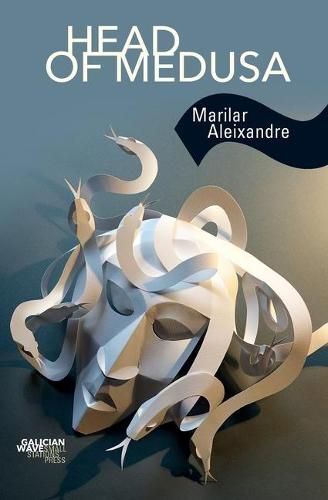Readings Newsletter
Become a Readings Member to make your shopping experience even easier.
Sign in or sign up for free!
You’re not far away from qualifying for FREE standard shipping within Australia
You’ve qualified for FREE standard shipping within Australia
The cart is loading…






This title is printed to order. This book may have been self-published. If so, we cannot guarantee the quality of the content. In the main most books will have gone through the editing process however some may not. We therefore suggest that you be aware of this before ordering this book. If in doubt check either the author or publisher’s details as we are unable to accept any returns unless they are faulty. Please contact us if you have any questions.
The Roman poet Ovid’s famous book of poetry Metamorphoses contains a succession of women who are changed into something else after they have been raped. One of these is Medusa, the Gorgon, daughter of the sea deities (and also siblings) Phorcys and Ceto. She is reputed to have been a ravishingly beautiful maiden, with striking hair, who received the attention of many suitors. She was raped by the god of the sea, Neptune, in Minerva’s temple. In anger at this desecration of her temple, Minerva turned Medusa’s hair into serpents and made her face so terrible to behold that it would turn any who looked at it into stone. The Greek hero Perseus, son of Jupiter and the mortal Danae, was sent by the king of Seriphos, Polydectes, who desired Perseus’ mother and wished to get Perseus out of the way, to behead the Gorgon. For this purpose, he received help from the gods: a shield of polished bronze, winged sandals, an adamantine sword and Hades’ helm of darkness (or invisibility cloak). According to the myth, he beheaded her in her sleep and used her head as a weapon before giving it to Minerva. But who is the real victim here? Medusa suffers for her beauty. She is raped by a god and punished by another. People then avoid looking her in the eye in case they are turned to stone. And how does the myth of Medusa relate to two students in Galicia in their final year at school, Sofia and Lupe, who after a fancy-dress dinner, in the early hours of the morning, are picked up by two men and sexually assaulted? What will the reaction of their classmates be? Will they be prepared to look them in the eye? And how will the girls themselves respond to this assault in a society that may prefer to sweep its acts of indecency under the carpet and turn a blind eye? Head of Medusa is a story of wrongdoing, friendship, renewal and moral courage.
$9.00 standard shipping within Australia
FREE standard shipping within Australia for orders over $100.00
Express & International shipping calculated at checkout
This title is printed to order. This book may have been self-published. If so, we cannot guarantee the quality of the content. In the main most books will have gone through the editing process however some may not. We therefore suggest that you be aware of this before ordering this book. If in doubt check either the author or publisher’s details as we are unable to accept any returns unless they are faulty. Please contact us if you have any questions.
The Roman poet Ovid’s famous book of poetry Metamorphoses contains a succession of women who are changed into something else after they have been raped. One of these is Medusa, the Gorgon, daughter of the sea deities (and also siblings) Phorcys and Ceto. She is reputed to have been a ravishingly beautiful maiden, with striking hair, who received the attention of many suitors. She was raped by the god of the sea, Neptune, in Minerva’s temple. In anger at this desecration of her temple, Minerva turned Medusa’s hair into serpents and made her face so terrible to behold that it would turn any who looked at it into stone. The Greek hero Perseus, son of Jupiter and the mortal Danae, was sent by the king of Seriphos, Polydectes, who desired Perseus’ mother and wished to get Perseus out of the way, to behead the Gorgon. For this purpose, he received help from the gods: a shield of polished bronze, winged sandals, an adamantine sword and Hades’ helm of darkness (or invisibility cloak). According to the myth, he beheaded her in her sleep and used her head as a weapon before giving it to Minerva. But who is the real victim here? Medusa suffers for her beauty. She is raped by a god and punished by another. People then avoid looking her in the eye in case they are turned to stone. And how does the myth of Medusa relate to two students in Galicia in their final year at school, Sofia and Lupe, who after a fancy-dress dinner, in the early hours of the morning, are picked up by two men and sexually assaulted? What will the reaction of their classmates be? Will they be prepared to look them in the eye? And how will the girls themselves respond to this assault in a society that may prefer to sweep its acts of indecency under the carpet and turn a blind eye? Head of Medusa is a story of wrongdoing, friendship, renewal and moral courage.